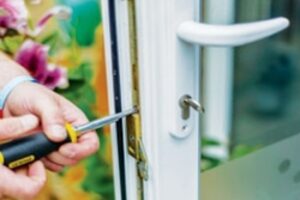Your Worst Nightmare Concerning Deadbolt Locks Replacement Bring To Life
Deadbolt Locks Replacement: A Comprehensive Guide
Deadbolt locks work as a vital element of home security, offering boosted defense against unauthorized entry. They are designed to prevent a door from being opened without the correct secret or mix, making them a go-to option for house owners seeking to strengthen their safety procedures. Over time, nevertheless, deadbolt locks can break, become harmed, or merely necessitate replacement due to changes in security needs. This article describes important information connected to deadbolt lock replacements, types of locks, installation processes, and often asked questions (FAQs).
Why Replace Deadbolt Locks?
There are several reasons why a homeowner may think about replacing deadbolt locks:
Wear and Tear: Frequent usage can cause mechanical failure. If a lock feels stiff, sticky, or stops working to engage properly, it might be time for a replacement.
Key Loss: Losing a secret can render a lock vulnerable to unapproved access. In such cases, replacing the lock can provide assurance.
Security Upgrades: As innovation advances, more recent deadbolt styles provide better security functions. Updating to a more secure design can much better protect your home.
Moving into a New Home: It's suggested to replace deadbolt locks when moving into a new house to ensure that previous renters or owners do not retain access.
Changing Personal Security Needs: A house owner may wish to change their security system completely for reasons such as added functions or the desire for smart technology.
Types of Deadbolt Locks
Comprehending the types of deadbolt locks can streamline the replacement process. Below are the frequently utilized types:
1. Single Cylinder Deadbolt
- Operated with a key on the outside and a thumb turn on the within.
- The majority of widespread for residential doors.
2. Double Cylinder Deadbolt
- Requires a key for both the outside and within, supplying additional security.
- Helpful for doors with glass panels nearby but can become a security danger in emergency situations.
3. Keyless Deadbolt
- Permits gain access to through a keypad or smart gadget app rather of a physical key.
- Deals versatility and benefit but might need batteries or a power source.
4. Rim Deadbolt
- Mounted on the interior surface area of the door.
- Often used in conjunction with a traditional knob lock for added security.
5. Smart Deadbolt
- Links to home automation systems permitting remote access.
- Features like a mobile app open doors, track access, and change codes from another location.
Steps for Replacing a Deadbolt Lock
Replacing a deadbolt lock can be an uncomplicated procedure if followed properly. Here is a detailed guide:
Materials Needed:
- New deadbolt lock
- Screwdriver
- Measuring tape
- Pencil
- Level
Replacement Steps:
Remove the Old Deadbolt:
- Unscrew the screws on both the exterior and interior sides of the lock.
- Remove the old lock from the door.
Procedure the Door:
- Use a measuring tape to confirm that the new deadbolt fits effectively. Repair My Windows And Doors of deadbolts fit basic door density, but it's necessary to confirm measurements.
Install the New Deadbolt:
- Insert the new deadbolt into the hole.
- Line up the exterior and interior elements, guaranteeing they fit snugly.
Secure the Deadbolt:
- Use screws offered in the new deadbolt package to secure both sides.
- Ensure the lock operates smoothly.
Test the Lock:
- Check to see if the essential turns efficiently and if the thumb-turn operates correctly.
- Validate that the deadbolt extends and pulls back fully in the strike plate.
Last Adjustments:
- Use a level to validate appropriate alignment.
- Change screws if required for an ideal fit.
FAQs About Deadbolt Locks Replacement
What should I consider when picking a new deadbolt lock?
- Security rankings: Look for locks that are ANSI licensed (American National Standards Institute). Higher grades provide better resistance to required entry.
- Compatibility: Ensure the new lock fits the existing door size.
- Types of locks: Determine your choice between standard, smart, or keyless deadbolts.
How often should deadbolt locks be replaced?
- It's suggested to check deadbolt locks every year and change them every 5-7 years or as quickly as you see any wear or security issues.
Can I replace a deadbolt lock myself, or should I work with a professional?
- Many property owners with standard tools can successfully change a deadbolt lock themselves. However, working with a specialist may be a good idea if you're uncomfortable with DIY tasks.
What are the benefits of smart deadbolts?
- Smart deadbolts use convenience, allowing keyless entry and remote gain access to through apps. They likewise typically consist of functions like user gain access to codes and activity logs for included security.
Is it required to replace the whole lock if I lose a secret?
- If you lose a key, you typically have the option to rekey the lock, which alters the internal mechanism, making the old crucial useless. However, if the lock is damaged or dated, replacement may be smart.
Replacing a deadbolt lock can significantly impact the security and functionality of your home. From comprehending various lock types to following the installation steps, property owners are empowered to enhance their precaution. By frequently assessing the condition of their locks, people can make sure that they are protected against unapproved gain access to, therefore accomplishing comfort in their living areas. Investing time in understanding and maintaining home security, consisting of lock replacements, is a little price to spend for the security of one's residential or commercial property and enjoyed ones.
